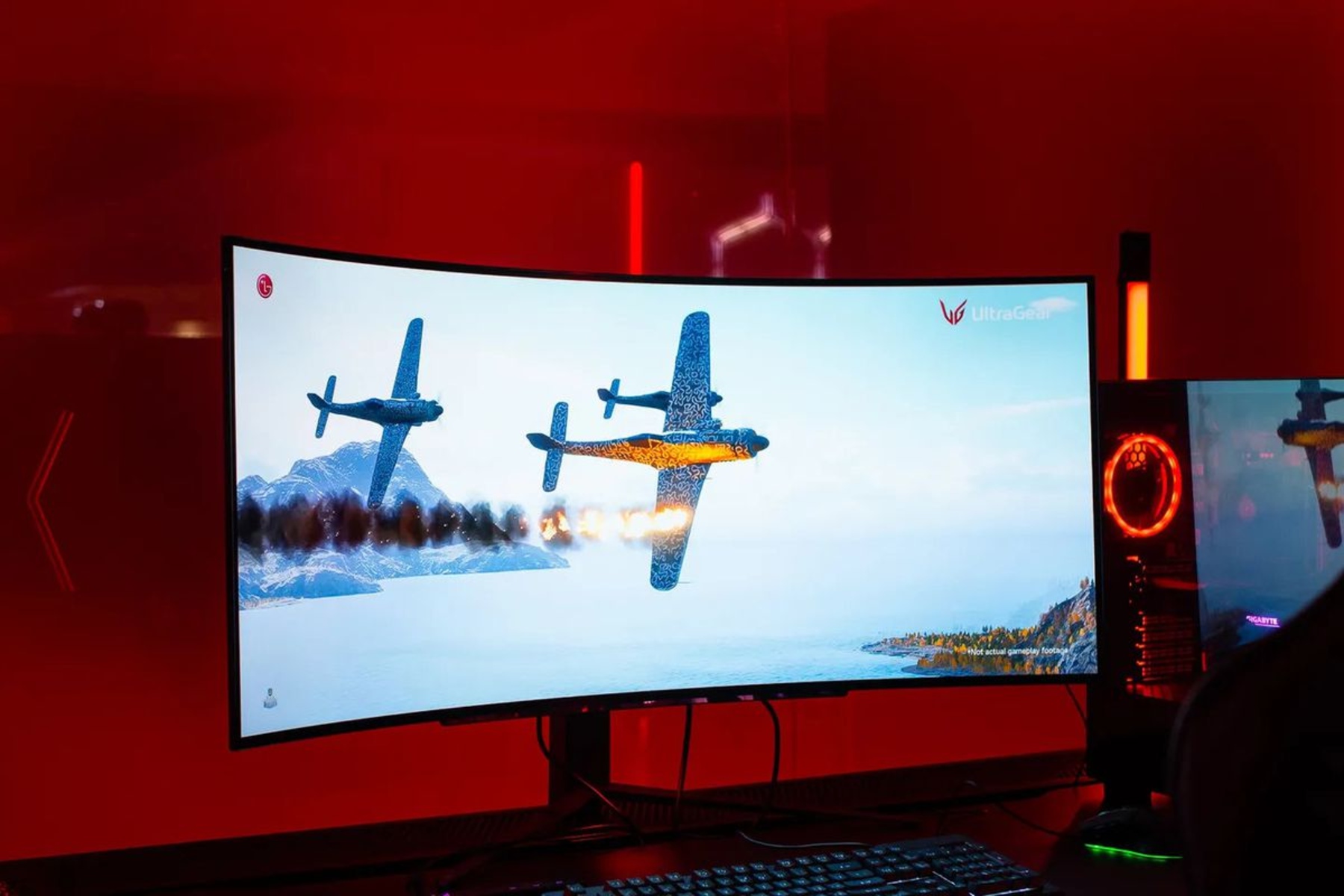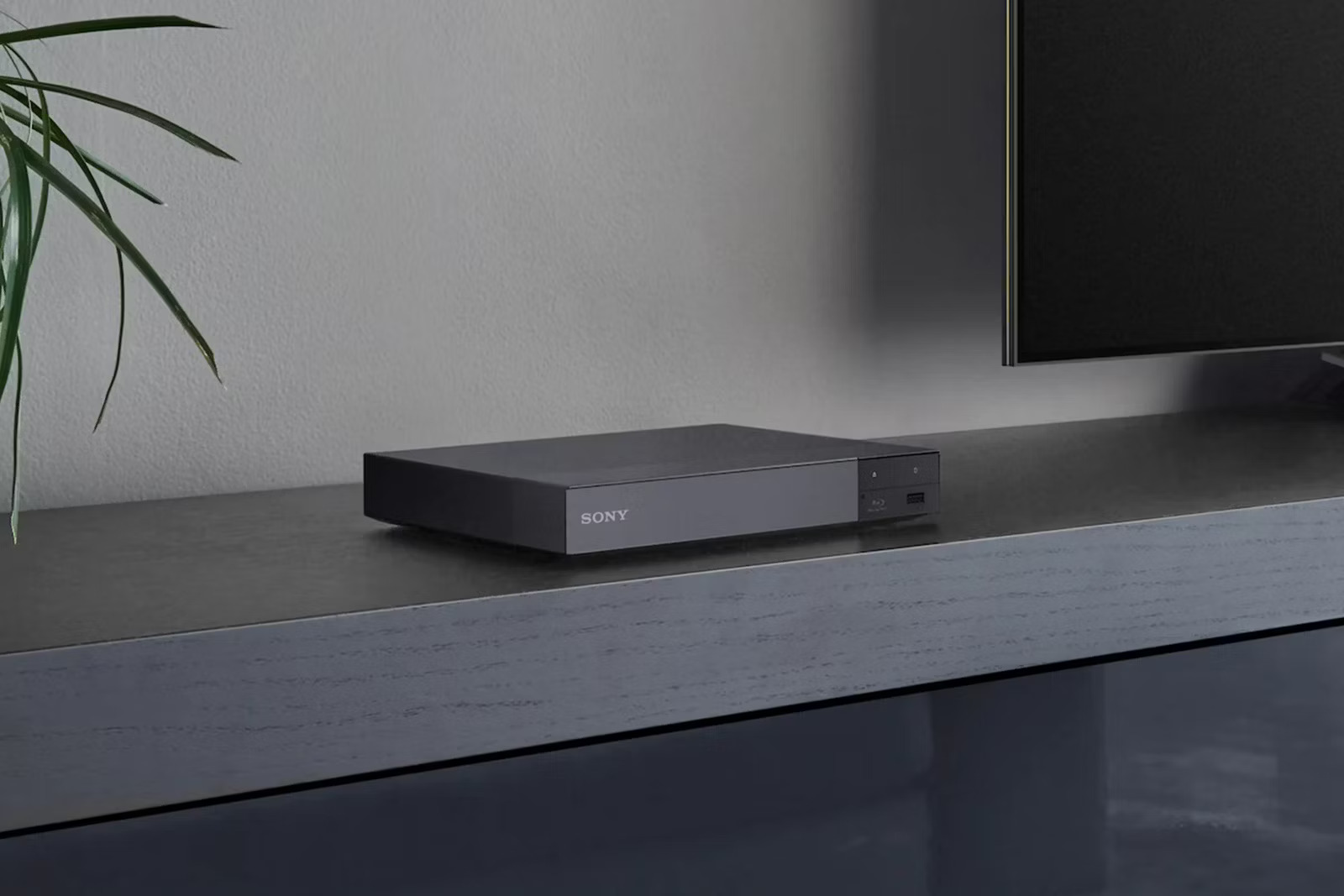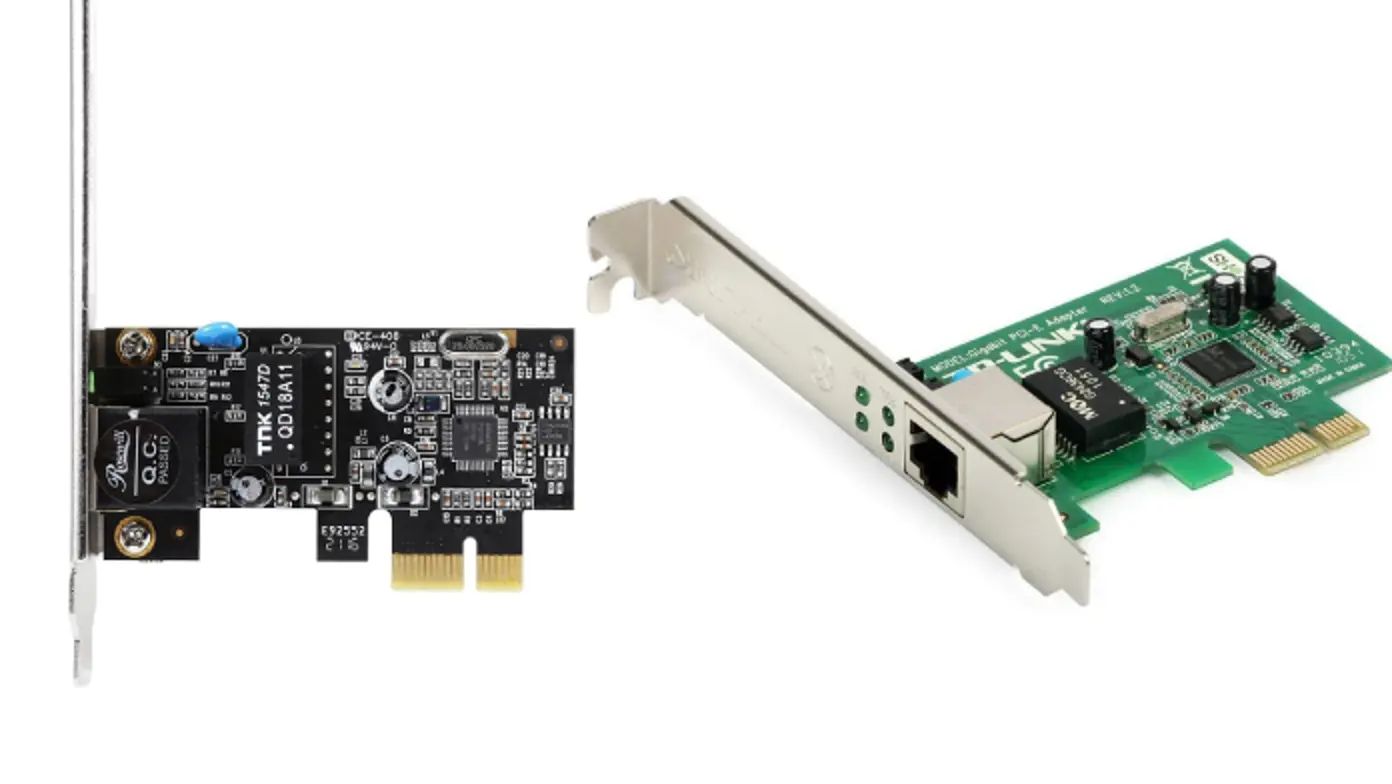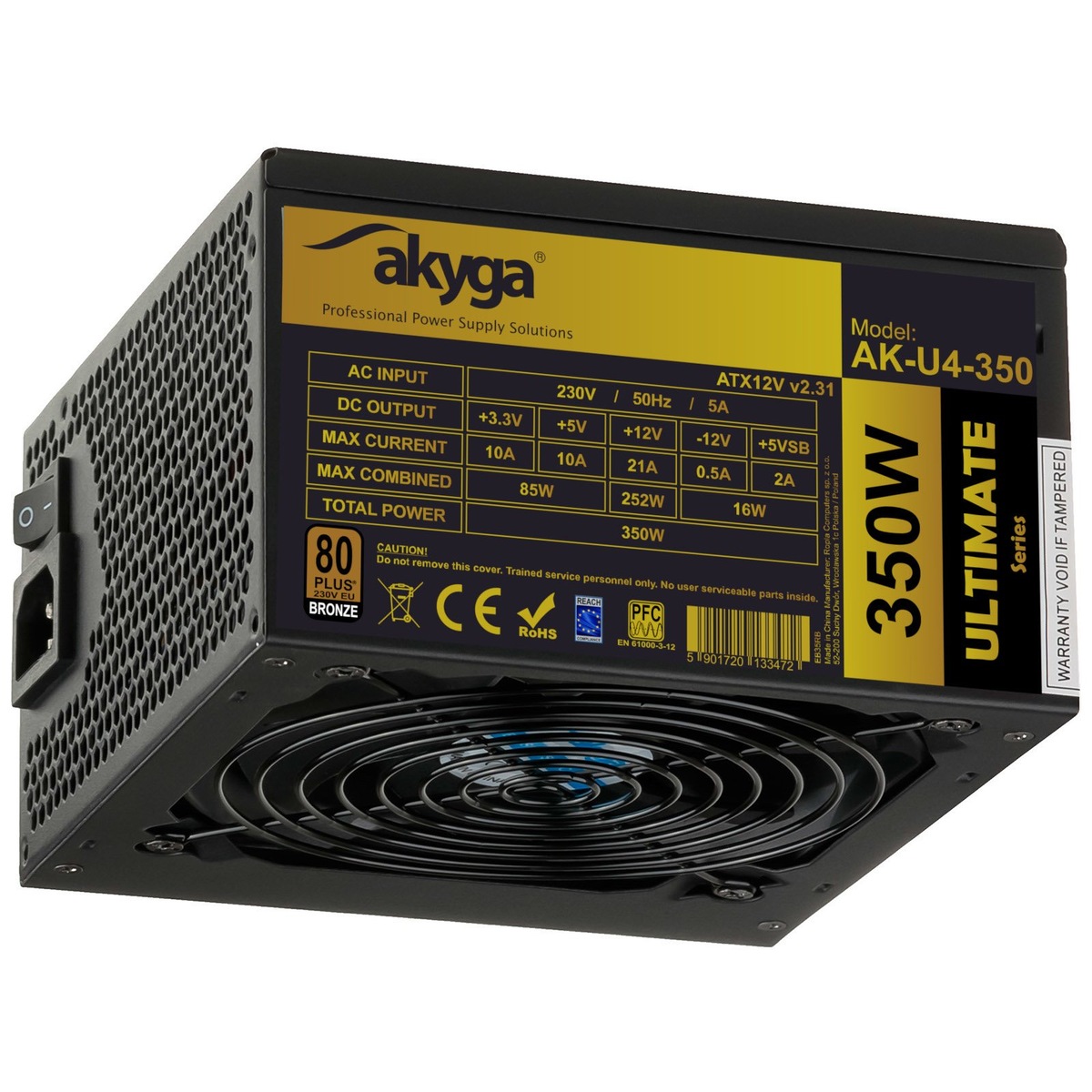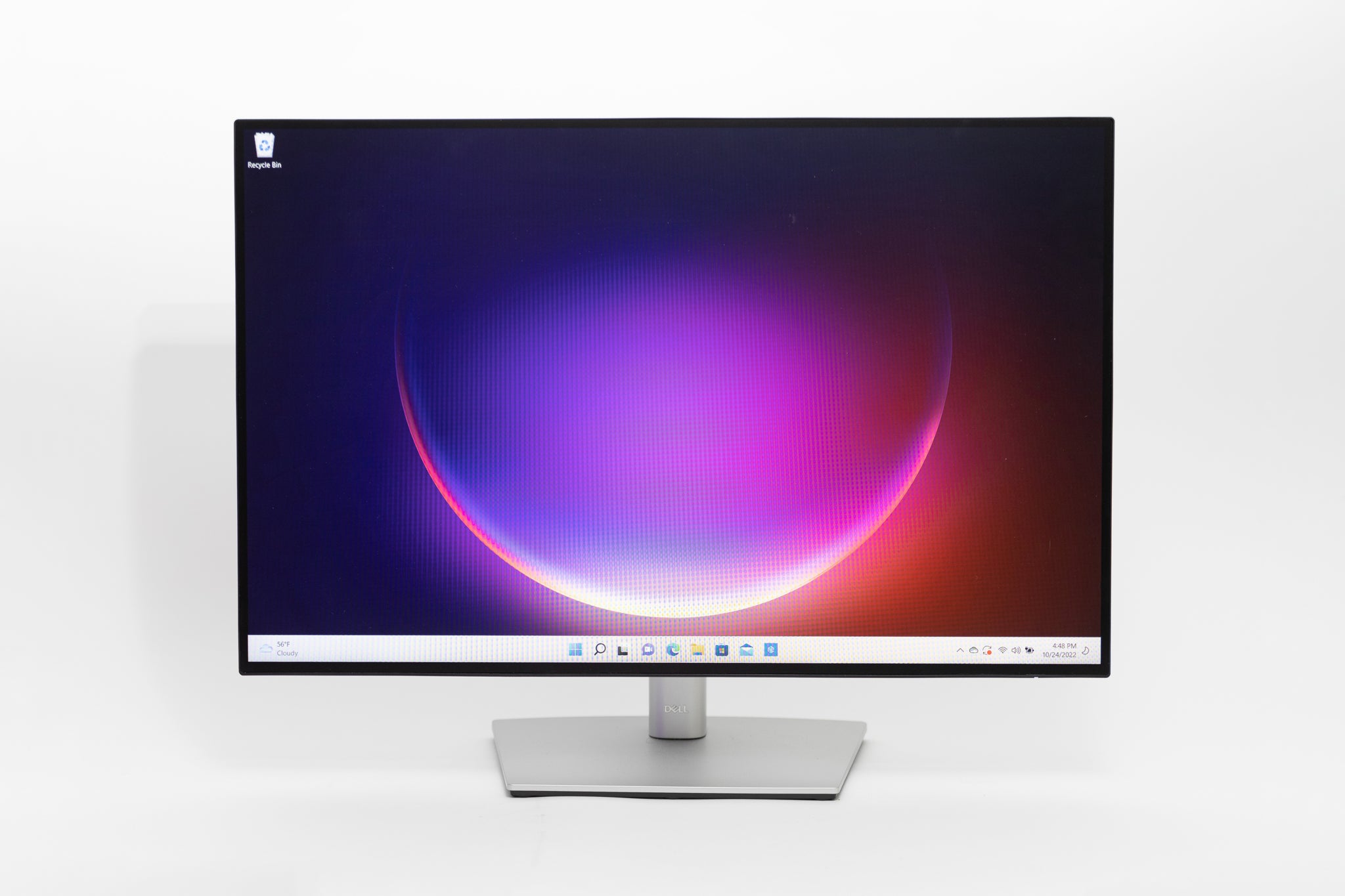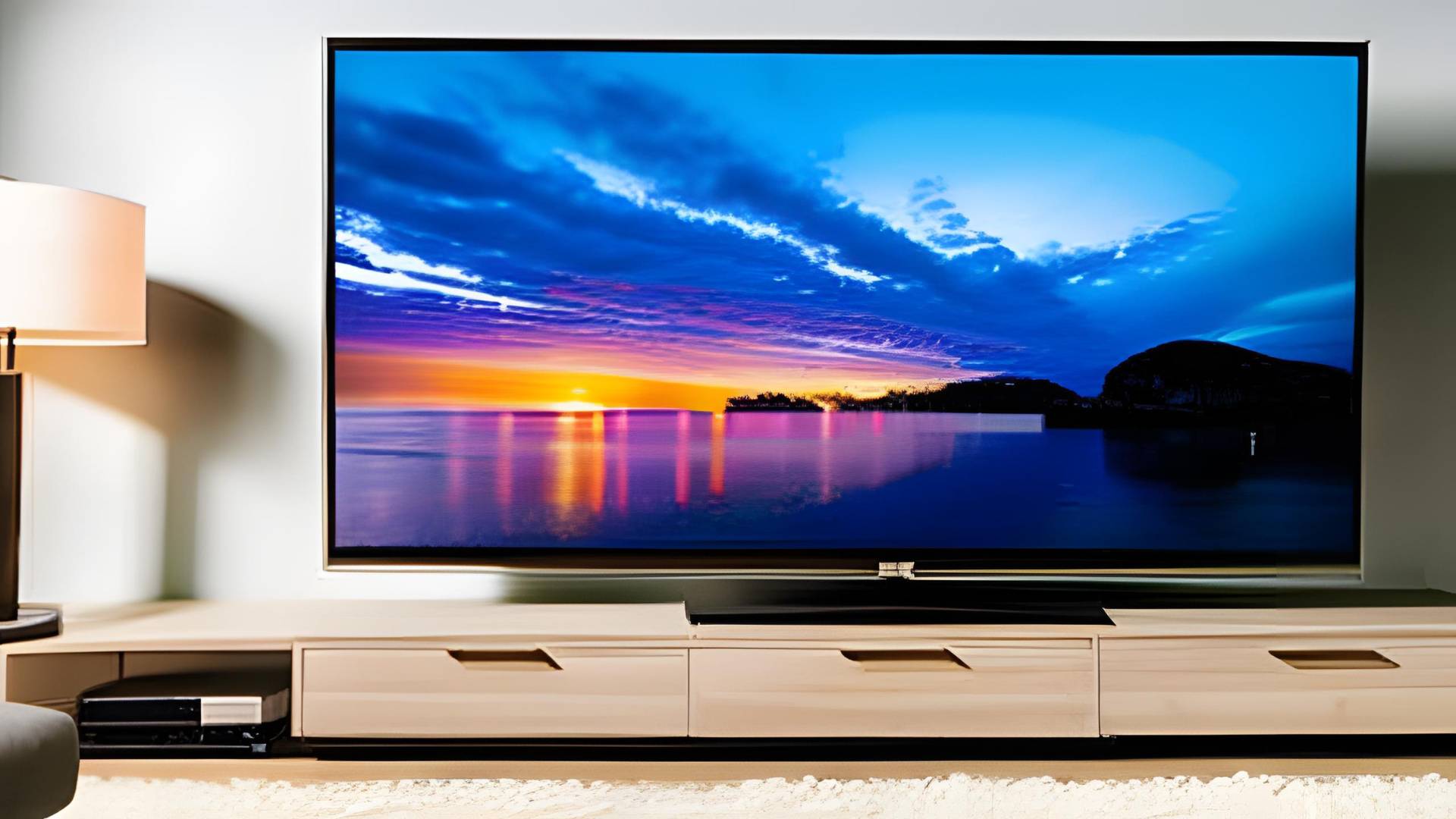Introduction
Gaming has become a popular form of entertainment, and for avid gamers, having the best gaming monitor can greatly enhance their gaming experience. However, with so many options available on the market, it can be challenging to find the perfect gaming monitor within a specific budget. If you’re looking for the best gaming monitor under $350, you’re in luck. In this article, we will explore some key features to consider when selecting a gaming monitor, as well as provide a list of top-rated monitors that deliver exceptional performance without breaking the bank.
When searching for a gaming monitor, it’s essential to prioritize certain features that can significantly impact gameplay. These features include resolution, refresh rate, response time, panel technology, connectivity options, size and aspect ratio, adaptive sync capabilities, and the inclusion of HDR technology. By understanding the importance of each feature, you can make an informed decision that aligns with your gaming preferences and budget.
Resolution is one of the critical factors to consider in a gaming monitor. A higher resolution, such as 1440p or 4K, offers crisper and more detailed visuals, allowing you to immerse yourself fully in the game. Refresh rate refers to the number of times the monitor can update the image per second, and a higher refresh rate, such as 144Hz or 240Hz, ensures smoother gameplay and reduces motion blur.
The response time of a gaming monitor is crucial, as it determines how quickly the pixels can change color. A lower response time, ideally 1ms, minimizes ghosting and motion blur, providing sharper images during fast-paced gaming sessions. The panel technology, whether TN (Twisted Nematic), VA (Vertical Alignment), or IPS (In-Plane Switching), influences factors like color accuracy, contrast ratio, and viewing angles.
Connectivity options play a significant role in ensuring compatibility with your gaming setup. Look for monitors that provide multiple HDMI and DisplayPort inputs, as well as USB ports for convenient connectivity to other devices. Size and aspect ratio are subjective choices based on personal preference and available space, but larger monitors with ultrawide aspect ratios can offer a more immersive gaming experience.
Adaptive sync technology, such as AMD FreeSync and NVIDIA G-Sync, helps to eliminate screen tearing and stuttering by synchronizing the monitor’s refresh rate with the graphics card’s output. On the other hand, HDR (High Dynamic Range) technology enhances color and contrast, resulting in more vibrant and realistic visuals.
Important Features to Consider
When searching for the best gaming monitor under $350, there are several important features to consider. These features can greatly impact your gaming experience and ensure that you get the most out of your monitor within your budget. Understanding and prioritizing these features will help you make an informed decision that aligns with your gaming preferences. Here are some of the key features to consider:
- Resolution: The resolution of a gaming monitor refers to the number of pixels it can display. A higher resolution, such as 1440p or 4K, offers more detailed and immersive visuals. However, keep in mind that higher resolutions may require a more powerful graphics card to maintain smooth gameplay.
- Refresh Rate: The refresh rate represents how many times the monitor can update the image per second. A higher refresh rate, such as 144Hz or 240Hz, results in smoother and more fluid gameplay. A higher refresh rate is especially important for fast-paced games that require quick reactions.
- Response Time: The response time of a gaming monitor refers to how quickly the pixels can change color. A lower response time, ideally 1ms, reduces motion blur and ghosting, resulting in sharper and more detailed images during fast-moving scenes. A low response time is crucial for competitive gaming.
- Panel Technology: There are three main panel technologies used in gaming monitors: TN (Twisted Nematic), VA (Vertical Alignment), and IPS (In-Plane Switching). TN panels typically have faster response times but poorer color accuracy and viewing angles. VA panels offer better contrast ratios but can suffer from slower response times. IPS panels provide excellent color accuracy and wide viewing angles but may have slightly slower response times.
- Connectivity Options: Consider the connectivity options available on the gaming monitor. Look for monitors that provide multiple HDMI and DisplayPort inputs, as well as USB ports for easy connectivity to other devices such as gaming consoles, PCs, or peripherals.
- Size and Aspect Ratio: The size and aspect ratio of the monitor can impact your overall gaming experience. Larger monitors provide a more immersive feel, while ultrawide aspect ratios offer a wider field of view. However, consider your available space and desk setup when choosing the size and aspect ratio of your gaming monitor.
- Adaptive Sync: Look for gaming monitors that offer adaptive sync technology, such as AMD FreeSync or NVIDIA G-Sync. These technologies synchronize the monitor’s refresh rate with the graphics card’s output, reducing screen tearing and stuttering for a smoother gaming experience.
- HDR: High Dynamic Range (HDR) technology enhances color and contrast, resulting in more vibrant and lifelike visuals. Monitors with HDR support can provide a more immersive gaming experience with greater color depth and detail.
By considering these important features, you can find a gaming monitor under $350 that meets your requirements and delivers exceptional performance for an enjoyable gaming experience.
Resolution
The resolution of a gaming monitor is a crucial factor to consider when searching for the best gaming monitor under $350. Resolution refers to the number of pixels that the monitor can display, and it has a direct impact on the level of detail and clarity in the visuals. A higher resolution allows for more precise and immersive gaming experiences.
One popular resolution option is 1440p, also known as Quad HD. This resolution offers a significant improvement over the standard 1080p (Full HD) resolution, providing sharper images and more defined details. With 1440p, you can enjoy a more immersive gaming experience with enhanced visuals and increased screen real estate.
For those seeking an even more immersive experience, 4K resolution monitors are an excellent choice. Providing four times the number of pixels compared to 1080p, 4K resolution delivers stunning visuals with incredible detail and sharpness. The higher pixel density results in smoother lines and textures, making everything on the screen appear more lifelike.
However, it’s important to keep in mind that higher resolutions demand more processing power from your graphics card. To fully benefit from a higher resolution gaming monitor, you’ll need a robust GPU that can handle the increased workload. Ensure that your gaming setup can support the resolution you choose to avoid any potential performance issues.
While 1440p and 4K are popular choices, it’s worth noting that lower resolutions, such as 1080p, can still offer an enjoyable gaming experience, especially on smaller monitor sizes. Additionally, opting for a lower resolution allows you to allocate more of your budget towards other important features, such as refresh rate or panel technology.
Ultimately, the choice of resolution depends on your personal preferences and your system’s capabilities. If you have a powerful gaming rig and value highly detailed visuals and a more immersive gaming experience, a higher resolution like 1440p or 4K may be the way to go. However, if you’re on a tighter budget or prefer higher frame rates over resolution, sticking with 1080p may be a practical choice.
In summary, considering the resolution is crucial when selecting a gaming monitor under $350. Determine the level of detail and immersion you desire, and choose a resolution that suits your gaming preferences and budget.
Refresh Rate
When it comes to gaming, the refresh rate of a monitor is a crucial factor to consider. The refresh rate refers to the number of times the monitor can update the image per second. A higher refresh rate results in smoother and more fluid gameplay, reducing motion blur and enhancing overall responsiveness.
Traditionally, monitors had a standard refresh rate of 60Hz, meaning they could refresh the image on the screen 60 times per second. However, in recent years, higher refresh rates, such as 144Hz, 165Hz, and even 240Hz, have become increasingly common, especially in gaming-focused monitors.
Higher refresh rates provide several advantages for gamers. First and foremost, they result in smoother motion. Whether you’re navigating a virtual battlefield or exploring a vibrant open-world environment, a higher refresh rate ensures that the movement on the screen is more fluid and natural. This is particularly noticeable in fast-paced games where quick reactions are essential.
In addition to smoother motion, a higher refresh rate can also reduce motion blur. Motion blur refers to the blurring effect that occurs when objects are in motion on the screen. A higher refresh rate minimizes this blur, resulting in sharper and more detailed visuals, allowing you to see every detail even during fast-moving action sequences.
It’s important to note that to take full advantage of a higher refresh rate, you’ll need a capable graphics card that can deliver a high frame rate. If your graphics card can’t consistently produce enough frames per second (FPS) to match the monitor’s refresh rate, you may not notice a significant improvement in gameplay. However, even if you don’t reach the maximum refresh rate, having a higher refresh rate monitor can still provide some benefits.
When selecting a gaming monitor under $350, it’s recommended to look for options with a refresh rate of at least 144Hz. This is a sweet spot that delivers a noticeable difference compared to standard 60Hz monitors, without requiring an excessively powerful graphics card. However, if your budget permits, you can explore even higher refresh rate options for an enhanced gaming experience.
Ultimately, the refresh rate is a crucial specification to consider when choosing a gaming monitor. Higher refresh rates provide smoother and more fluid motion, reducing motion blur and enhancing overall responsiveness. Consider your budget, graphics card capabilities, and gaming preferences to select a monitor with a refresh rate that suits your needs.
Response Time
When it comes to gaming, the response time of a monitor is a crucial specification to consider. Response time refers to how quickly the pixels can change color from one shade to another. It is measured in milliseconds (ms). A lower response time generally results in less motion blur and ghosting, providing sharper and more detailed images during fast-paced gaming sessions.
The response time is particularly important for gamers who play competitive or fast-action games. In these games, quick reflexes and precise movements are crucial, and any blurring or smearing of the image can impact gameplay. A fast response time helps to minimize these undesirable effects, ensuring that you see crisp and clear visuals, even during rapid movements or quick scene changes.
Most gaming monitors offer response times between 1ms and 4ms. A 1ms response time is considered the gold standard for competitive gaming, as it minimizes ghosting and motion blur to deliver the smoothest visuals. However, monitors with 1ms response times may come at a higher price point.
Monitors with response times between 2ms and 4ms still offer excellent performance and are suitable for most gamers. The difference in perceived motion blur between response times in this range is often minimal and may not be noticeable to the average user. However, if you are particularly sensitive to motion blur or participate in highly competitive gaming, you may want to opt for a monitor with a lower response time.
It is worth noting that the advertised response time may not always accurately reflect the real-world performance of the monitor. Different manufacturers may use different testing methods or have varying interpretations of what constitutes response time. Therefore, it’s advisable to read reviews and gather information from reliable sources to get a better understanding of the actual response time performance of a specific gaming monitor.
Keep in mind that the response time is just one factor to consider when choosing a gaming monitor. Other specifications such as resolution, refresh rate, panel technology, and connectivity options should also be taken into account to ensure a well-rounded gaming experience.
In summary, the response time of a gaming monitor plays a significant role in delivering sharp and clear visuals during fast-paced gaming. A lower response time, ideally 1ms, minimizes motion blur and ghosting, ensuring that you have a smooth and immersive gaming experience. However, monitors with response times between 2ms and 4ms can also provide excellent performance for most gamers.
Panel Technology
When choosing a gaming monitor, the panel technology used in the display is an important consideration. Different panel technologies offer varying advantages and disadvantages in terms of color accuracy, contrast ratio, viewing angles, and response times.
There are three main types of panel technologies commonly used in gaming monitors: TN (Twisted Nematic), VA (Vertical Alignment), and IPS (In-Plane Switching).
TN panels are known for their fast response times, making them suitable for competitive gaming. They offer high refresh rates and low input lag, resulting in smooth and responsive gameplay. However, TN panels often have narrower viewing angles and inferior color reproduction compared to other panel types. This means that colors may appear less vibrant, and the image quality can degrade when viewed from off-center angles.
VA panels, on the other hand, excel in terms of contrast ratio. They offer deep blacks and better color reproduction, resulting in more vibrant and visually appealing images. VA panels typically have wider viewing angles compared to TN panels. However, they may have slightly slower response times, leading to potential motion blur in fast-paced games.
IPS panels are known for their superior color accuracy and wider viewing angles. They provide more consistent and accurate colors, making them suitable for tasks such as photo editing and graphic design. IPS panels also typically have better color reproduction and higher brightness levels compared to TN and VA panels. However, the main drawback of IPS panels is their slower response times. While advancements have been made to improve response times in IPS panels, some instances of motion blur can still be observed, especially in highly competitive gaming scenarios.
It’s important to note that panel technology is not the sole determinant of the overall performance of a gaming monitor. Manufacturers often implement various techniques, such as overdrive technology, in their displays to mitigate the shortcomings of each panel type and enhance the gaming experience.
Ultimately, the choice of panel technology depends on personal preference and the type of games you play. If you prioritize fast response times and smooth gameplay, a TN panel may be the preferred choice. If visual quality and color accuracy are paramount, an IPS panel is recommended. VA panels strike a middle ground, providing good contrast ratios and respectable response times.
When selecting a gaming monitor under $350, it’s essential to weigh the pros and cons of each panel technology and consider how it aligns with your gaming needs and preferences. Understanding the characteristics of each panel type will help you make an informed decision and choose a gaming monitor that delivers the best visual experience for your gaming sessions.
Connectivity Options
Connectivity options are an essential consideration when choosing a gaming monitor. Having a variety of connectivity ports ensures compatibility with your gaming setup and allows for easy connection to other devices. When selecting a gaming monitor under $350, it’s important to look for options that offer a range of connectivity options to accommodate your needs.
One of the most common connectivity options is HDMI (High-Definition Multimedia Interface). HDMI ports allow for the transmission of high-quality video and audio signals from your gaming console, PC, or other devices to the monitor. Most gaming monitors come equipped with at least one HDMI port, but it’s beneficial to have multiple HDMI ports to connect multiple devices without the need to constantly switch cables.
Another important connectivity option is DisplayPort. DisplayPort ports provide high bandwidth and support for higher refresh rates and resolutions compared to HDMI. They are commonly used to connect gaming monitors to high-end graphics cards, offering optimal performance and compatibility. It’s recommended to have at least one DisplayPort available on your gaming monitor, especially if you have a powerful gaming rig.
In addition to HDMI and DisplayPort, having USB ports on your gaming monitor can be a valuable feature. USB ports allow for convenient connectivity of peripherals, such as gaming keyboards, mice, and controllers. They also offer the option to charge your devices directly from the monitor, reducing cable clutter on your desk. Look for monitors that provide multiple USB ports for maximum versatility.
Other connectivity options to consider include audio ports for connecting speakers or headphones, as well as legacy ports such as DVI or VGA for compatibility with older devices or secondary monitors. Although these legacy ports are becoming less common, having them available can be useful in some scenarios.
Additionally, some gaming monitors offer built-in features such as USB-C ports or Ethernet ports, providing extra functionality and connectivity options. USB-C ports can allow for video and power delivery, making it easy to connect laptops or other devices with a single cable.
When choosing a gaming monitor, it’s important to consider your gaming setup and the devices you intend to connect to the monitor. Assess your requirements for HDMI, DisplayPort, USB, audio, and any other specific connectivity options you may need. Ensuring that the monitor has the necessary connectivity ports will prevent the need for additional adapters or workarounds.
In summary, the connectivity options available on a gaming monitor play a crucial role in ensuring compatibility with your gaming setup. Look for monitors that offer multiple HDMI and DisplayPort ports, USB ports, and any other necessary connectivity options to facilitate easy and seamless connection to your devices.
Size and Aspect Ratio
The size and aspect ratio of a gaming monitor are important considerations that can greatly impact your gaming experience. The size refers to the physical dimensions of the monitor, while the aspect ratio determines the width and height ratio of the screen.
When it comes to size, gaming monitors are available in a range of options, typically measured diagonally in inches. The choice of monitor size depends on personal preference and the available space in your gaming setup. Larger monitors, such as 27 inches or even ultrawide monitors of 34 inches or more, offer a more immersive gaming experience by providing a wider field of view and more screen real estate. They can enhance your gaming experience by making details more visible and creating a more immersive environment. However, larger monitors may require a larger desk space or gaming area.
On the other hand, smaller monitors, such as 24 inches, are more compact and can be ideal for those with limited space or who prefer a higher pixel density. Smaller monitors may also offer a faster pixel response time, resulting in reduced motion blur and overall better performance in fast-paced games.
Aspect ratio determines the width and height ratio of the screen. Most gaming monitors have a standard aspect ratio of 16:9, offering a more traditional widescreen format. This aspect ratio is suitable for most games and media content. However, some gaming monitors feature an ultrawide 21:9 aspect ratio, providing a wider field of view and a more immersive gaming experience. Ultrawide monitors are especially popular for games that support the wider aspect ratio, as they allow for a wider view of the game world.
It’s important to consider your gaming preferences and the types of games you play when selecting the size and aspect ratio of your gaming monitor. For competitive gaming or fast-paced games that require quick reactions, a smaller monitor with a 16:9 aspect ratio may be preferred, as it allows for easier eye tracking across the screen. For gamers who value immersion and enjoy games with expansive landscapes or cinematic experiences, a larger monitor or an ultrawide aspect ratio can provide a more captivating gaming experience.
When choosing the size and aspect ratio of a gaming monitor under $350, it’s crucial to find the right balance between your budget, personal preferences, and available space. Consider factors such as the viewing distance, desk size, and the types of games you enjoy playing. By choosing a size and aspect ratio that aligns with your gaming preferences, you can optimize your gaming experience and fully immerse yourself in the virtual world.
Adaptive Sync (AMD FreeSync and NVIDIA G-Sync)
Adaptive Sync technology, specifically AMD FreeSync and NVIDIA G-Sync, is a crucial feature to consider when choosing a gaming monitor. These technologies aim to synchronize the refresh rate of the monitor with the output of the graphics card, resulting in a smoother gaming experience with reduced screen tearing and stuttering.
AMD FreeSync and NVIDIA G-Sync work by dynamically adjusting the refresh rate of the monitor to match the frame rate outputted by the graphics card. This synchronization eliminates the mismatch between the monitor’s refresh rate and the GPU’s frame rate, resulting in a more fluid and tear-free gaming experience. It ensures that each frame is displayed on the screen at the right moment, reducing visual artifacts and providing a smoother overall gameplay experience.
AMD FreeSync is an adaptive sync technology developed by AMD and is compatible with a wide range of AMD Radeon graphics cards. Most gaming monitors that support FreeSync have a variable refresh rate range, allowing the monitor to adapt to the varying frame rates produced by the graphics card. FreeSync is an open standard, which means that it can be implemented on a broader range of monitors at various price points.
NVIDIA G-Sync, on the other hand, is an adaptive sync technology developed by NVIDIA. G-Sync requires specific hardware modules to be integrated into the monitor, making G-Sync monitors generally more expensive than their FreeSync counterparts. However, G-Sync offers a wide range of refresh rate ranges, enabling smooth gaming experiences throughout a broader range of frame rates.
Both AMD FreeSync and NVIDIA G-Sync technologies aim to provide a tear-free and stutter-free gaming experience. The choice between the two mainly depends on the graphics card you have or plan to purchase. If you have an AMD Radeon graphics card, a monitor with support for FreeSync would be the most suitable choice. If you have an NVIDIA GeForce graphics card, a G-Sync monitor would be the optimal option.
However, recently, NVIDIA has also introduced “G-Sync Compatible” certification, which allows certain FreeSync monitors to be used with NVIDIA graphics cards. This expands the options for NVIDIA users who want to take advantage of adaptive sync technology without necessarily purchasing a G-Sync monitor.
In summary, adaptive sync technologies, such as AMD FreeSync and NVIDIA G-Sync, provide a significant benefit by synchronizing the refresh rate of the monitor with the output from the GPU. This eliminates screen tearing and stuttering, resulting in a smoother and more immersive gaming experience. Consider the graphics card you have or plan to use when choosing between FreeSync and G-Sync, and look for a gaming monitor that supports your preferred adaptive sync technology.
HDR (High Dynamic Range)
HDR (High Dynamic Range) is an important feature to consider when selecting a gaming monitor. HDR technology enhances the range of colors and contrast in the displayed image, resulting in more vibrant and realistic visuals.
With HDR, gaming monitors can reproduce a broader range of brightness levels and color gamuts. This allows for more accurate and lifelike representations of dark shadows, bright highlights, and subtle color variations, providing a more immersive gaming experience.
One of the key benefits of HDR technology is the increased contrast ratio. By preserving more details in both shadows and highlights, HDR monitors offer improved depth perception and a more dynamic range of colors. This leads to more visually striking and captivating gaming environments, as the colors appear more vibrant and the image quality is more true-to-life.
There are different HDR standards used in gaming monitors, including HDR10, HDR400, and HDR1000, among others. HDR10 is the most common standard, and many gaming monitors under $350 support this standard. It provides a significant improvement in image quality compared to SDR (Standard Dynamic Range) displays.
It’s important to note that while HDR technology can greatly enhance the gaming experience, the effectiveness of HDR depends on several factors. These include the monitor’s panel technology, backlighting, local dimming capabilities, and the quality of the HDR implementation. Higher-end monitors often provide more precise and accurate HDR performance.
However, it’s worth mentioning that not all games fully support HDR, and the extent of HDR implementation can vary between games. Some games offer HDR options that can be adjusted to suit your preferences, while others may have limited or flawed HDR implementations.
When considering a gaming monitor under $350 with HDR capabilities, it’s important to research and read reviews to ensure the monitor’s HDR performance aligns with your expectations. Look for monitors that offer good color accuracy, high peak brightness levels, and local dimming capabilities for better control of backlighting.
Ultimately, HDR technology can significantly enhance the visual quality of games, providing more vibrant colors, enhanced contrast, and a more immersive gaming experience. When combined with other features such as high resolution, refresh rate, and response time, HDR further elevates the overall gaming experience.
In summary, HDR (High Dynamic Range) technology in gaming monitors allows for more vibrant and realistic visuals, with enhanced contrast and color accuracy. When selecting a gaming monitor under $350, consider monitors that support HDR10 or other HDR standards and offer good color accuracy and brightness levels. Keep in mind that the extent and quality of HDR implementation may vary between monitors, so make sure to research and read reviews before making a purchase.
Best Gaming Monitors Under $350
Finding the best gaming monitor under $350 can be a challenging task, but there are several options that deliver exceptional performance and value within this budget range. Here are some of the top-rated gaming monitors that offer great features for gaming enthusiasts:
- Acer Nitro XV272U Pbmiiprzx: This 27-inch monitor features a 1440p resolution and a 144Hz refresh rate for smooth and detailed gaming visuals. It also supports AMD FreeSync for tear-free gaming and has an IPS panel for wide viewing angles and accurate color reproduction.
- ASUS TUF Gaming VG27AQ: With a 27-inch 1440p display and a fast 165Hz refresh rate, this monitor provides stunning visuals and smooth gameplay. It has an IPS panel that offers excellent color accuracy and wide viewing angles, and it’s G-Sync compatible for a tear-free experience.
- Dell S2719DGF: This 27-inch monitor offers a 1440p resolution and a 155Hz refresh rate, delivering sharp and fluid visuals. It features a TN panel with fast response times, making it suitable for competitive gaming. It also supports AMD FreeSync for smooth gameplay.
- LG Ultragear 27GL83A-B: With a 27-inch 1440p Nano IPS display and a 144Hz refresh rate, this monitor provides stunning colors, wide viewing angles, and smooth gameplay. It supports G-Sync compatibility for tear-free gaming and offers a 1ms response time for reduced motion blur.
- MSI Optix MAG271CQR: This 27-inch curved monitor features a 1440p resolution and a 144Hz refresh rate. Its VA panel offers deep blacks and excellent contrast ratio. It supports AMD FreeSync for tear-free gaming and has customizable RGB lighting for added aesthetics.
These gaming monitors offer a great combination of features and performance for under $350. They provide high resolutions, fast refresh rates, and support for adaptive sync technologies like AMD FreeSync and NVIDIA G-Sync. Whether you prioritize color accuracy, motion clarity, or immersive visuals, there is a gaming monitor on this list to suit your preferences.
It’s important to note that availability and prices may vary, so it’s recommended to check for the latest updates and compare prices from reputable retailers. Additionally, reading customer reviews and considering individual gaming needs can help in making an informed decision.
By investing in one of these top-rated gaming monitors, you can elevate your gaming experience without stretching your budget, enjoying smooth gameplay, vibrant visuals, and a competitive edge in your favorite games.
Acer Nitro XV272U Pbmiiprzx
The Acer Nitro XV272U Pbmiiprzx is a highly regarded gaming monitor that offers fantastic features for its price. With a 27-inch display and a crisp 2560×1440 resolution, this monitor provides sharp and detailed visuals that enhance the overall gaming experience.
With a fast 144Hz refresh rate, the Nitro XV272U ensures smooth and fluid gameplay, allowing for quick movements and reaction times without any motion blur. The monitor also supports AMD FreeSync, which synchronizes the refresh rate with the GPU’s output to eliminate screen tearing and provide a tear-free gaming experience. This is especially beneficial for gamers using AMD Radeon graphics cards.
Equipped with an IPS panel, the Acer Nitro XV272U offers excellent color accuracy and wide viewing angles. This means that you can enjoy vibrant and lifelike visuals from any angle without any loss in color saturation or distortion. The high level of color accuracy allows for more accurate color representation, making games visually appealing and immersive.
In addition to its stunning visuals, the Nitro XV272U prioritizes user comfort during long gaming sessions. It features Acer’s VisionCare technology, which utilizes flicker-less technology and blue light filter to reduce eye strain and provide a more comfortable viewing experience. This feature is particularly beneficial for gamers who spend extended periods in front of their monitors.
The Nitro XV272U also boasts a sleek design with thin bezels, providing a more immersive experience and allowing for seamless multi-monitor setups. The ergonomic stand offers tilt, swivel, and height adjustment, allowing you to find the perfect position for optimal viewing comfort.
Connectivity options on the Nitro XV272U are also impressive, with one DisplayPort 1.2 and two HDMI 2.0 ports available. This allows for easy connectivity with various gaming consoles, PCs, and other devices, ensuring versatility for different gaming setups.
Overall, the Acer Nitro XV272U Pbmiiprzx is a top-notch gaming monitor under $350. It boasts a high-resolution display with stunning visuals, a fast refresh rate for smooth gameplay, and features like AMD FreeSync and Acer’s VisionCare technology to enhance the overall gaming experience. With its excellent color accuracy, wide viewing angles, and ergonomic design, the Nitro XV272U is a great option for gamers seeking a high-performing monitor that doesn’t break the bank.
ASUS TUF Gaming VG27AQ
The ASUS TUF Gaming VG27AQ is a highly regarded gaming monitor that offers impressive features at an affordable price point. With a 27-inch display and a stunning 2560×1440 resolution, this monitor delivers clear and detailed visuals that enhance the gaming experience.
The VG27AQ boasts a fast 165Hz refresh rate, which ensures smooth and fluid gameplay. Games feel incredibly responsive, and fast-paced action sequences are delivered with exceptional clarity. This high refresh rate minimizes motion blur and provides a competitive edge for gamers who value smooth and immersive gameplay.
Equipped with an IPS panel, the ASUS TUF Gaming VG27AQ offers excellent color reproduction with accurate and vibrant hues. The monitor’s wide viewing angles allow for consistent and uniform colors, even when viewed from different positions. This means that you can enjoy sharp image quality and vibrant visuals from virtually any angle, improving immersion during gaming sessions.
In terms of adaptive sync technology, the VG27AQ is G-Sync compatible. This ensures a tear-free gaming experience for users with NVIDIA GeForce graphics cards. By synchronizing the monitor’s refresh rate with the GPU’s frame rate output, screen tearing and stuttering are eliminated, resulting in smoother and more visually appealing gameplay.
The VG27AQ also features ASUS Extreme Low Motion Blur (ELMB) technology, which further enhances the clarity of fast-moving scenes. ELMB reduces motion blur and ghosting, making it easier to track and react to in-game action. This feature is especially beneficial for competitive gamers who require precise and sharp visuals.
Another notable aspect of the ASUS TUF Gaming VG27AQ is its ergonomic design. The monitor comes with a fully adjustable stand that allows users to tilt, swivel, pivot, and adjust the height to achieve the most comfortable and optimal viewing position. This flexibility ensures ergonomic comfort during long gaming sessions.
In terms of connectivity options, the VG27AQ offers one DisplayPort 1.2 and two HDMI 2.0 ports, providing easy connectivity with various gaming devices. Additionally, it features a USB 3.0 hub that allows for seamless connection of peripherals, enhancing convenience and reducing cable clutter on your desk.
In summary, the ASUS TUF Gaming VG27AQ is an outstanding gaming monitor under $350. With its high-resolution display, fast refresh rate, G-Sync compatibility, and ASUS ELMB technology, it delivers smooth and immersive gameplay with excellent color accuracy and wide viewing angles. The ergonomic design and connectivity options further enhance its appeal, making it a fantastic choice for gamers seeking a versatile and high-performing monitor without breaking the bank.
Dell S2719DGF
The Dell S2719DGF is a popular gaming monitor that delivers impressive performance at an affordable price. With a 27-inch display and a sharp 2560×1440 resolution, this monitor offers excellent clarity and detail for an immersive gaming experience.
One standout feature of the S2719DGF is its fast 155Hz refresh rate. This ensures smooth and fluid gameplay, making fast-paced action sequences appear exceptionally clear and responsive. The high refresh rate minimizes motion blur, enabling gamers to have a competitive edge by reacting quickly to in-game events.
The monitor features a TN panel known for its fast response times, making it a suitable choice for gamers who prioritize motion clarity and fast-paced gaming. With a 1ms response time, the S2719DGF offers minimal input lag and virtually no ghosting or motion blur, resulting in crisp visuals and precise gameplay.
To enhance the gaming experience, the Dell S2719DGF supports AMD FreeSync technology. This adaptive sync technology synchronizes the monitor’s refresh rate with the AMD Radeon graphics card’s frame rate, reducing screen tearing and stuttering for a smoother and more enjoyable gaming experience.
Color accuracy is another noteworthy aspect of the S2719DGF. While TN panels are generally associated with limited color reproduction compared to IPS panels, Dell’s advanced technology ensures accurate and vibrant colors. This allows gamers to enjoy immersive visuals with impressive color depth.
Connectivity options on the S2719DGF include HDMI 2.0, DisplayPort 1.2, and USB 3.0 ports. This ensures easy connectivity with various gaming devices, such as consoles, PCs, and peripherals. The inclusion of USB 3.0 ports allows for quick and convenient connections for gaming accessories or charging devices.
Furthermore, a standout feature of the S2719DGF lies in its design. The ultra-thin bezels create a sleek and modern look while minimizing distractions during gameplay. The monitor also features an adjustable stand that offers tilt, swivel, and height adjustments, providing ergonomic comfort for extended gaming sessions.
In summary, the Dell S2719DGF offers impressive performance and features for a gaming monitor under $350. With its high refresh rate, fast response time, and support for AMD FreeSync, it provides smooth and fluid gameplay. The accurate color reproduction and adjustable design further enhance the gaming experience. If you’re in search of a gaming monitor that offers excellent motion clarity and vibrant visuals without breaking the bank, the Dell S2719DGF is a solid choice.
LG Ultragear 27GL83A-B
The LG Ultragear 27GL83A-B is a highly regarded gaming monitor that offers outstanding performance and features. With a 27-inch Nano IPS display and a sharp 2560×1440 resolution, this monitor delivers stunning visuals and excellent color reproduction.
The 27GL83A-B provides a 144Hz refresh rate, ensuring smooth and fluid gameplay that minimizes motion blur. Combined with a quick 1ms response time, this monitor offers exceptional motion clarity, providing gamers with an advantage during fast-paced action sequences.
One of the standout features of the 27GL83A-B is its wide color gamut coverage, which ensures accurate and vibrant colors. The Nano IPS panel offers excellent color reproduction, delivering lifelike visuals with rich and saturated hues. This makes games come to life with exceptional realism, enhancing the overall gaming experience.
Another notable feature of the 27GL83A-B is its compatibility with G-Sync, NVIDIA’s adaptive sync technology. This ensures a tear-free gaming experience for users with NVIDIA GeForce graphics cards. By synchronizing the monitor’s refresh rate with the GPU’s frame rate, screen tearing and stuttering are eliminated, providing smoother gameplay and enhancing immersion.
The monitor’s wide viewing angles are also worth mentioning. The IPS panel allows for consistent colors and uniform image quality, even when viewed from different angles. This means that gamers can enjoy stunning visuals from any position in front of the monitor, resulting in a more immersive gaming experience.
Design-wise, the 27GL83A-B features an ultra-thin bezel, providing a sleek and modern look as well as minimizing distractions during gameplay. The height-adjustable stand offers flexibility for ergonomic customization, allowing users to find the most comfortable viewing position.
In terms of connectivity, the monitor provides one DisplayPort 1.2 and two HDMI 2.0 ports, ensuring easy connectivity with gaming consoles, PCs, and other devices. It also has a headphone jack for convenient audio output.
In summary, the LG Ultragear 27GL83A-B offers exceptional gaming performance with its high-resolution Nano IPS display, fast refresh rate, and G-Sync compatibility. The wide color gamut coverage and wide viewing angles contribute to its excellent image quality, while the modern design and ergonomic adjustments enhance user comfort. If you’re seeking a gaming monitor that delivers stunning visuals, smooth gameplay, and immersive features, the 27GL83A-B is an excellent choice within the sub-$350 price range.
MSI Optix MAG271CQR
The MSI Optix MAG271CQR is a popular gaming monitor that offers impressive features for gamers seeking an immersive visual experience. With a 27-inch curved display and a 2560×1440 resolution, this monitor provides stunning visuals that enhance gaming immersion.
One of the notable features of the MAG271CQR is its high refresh rate of 144Hz. This ensures smooth and fluid gameplay, allowing for quick movements and responsive actions without motion blur. The monitor’s fast response time further enhances motion clarity, delivering sharp visuals during fast-paced gaming sessions.
The curved VA panel of the Optix MAG271CQR offers a wide viewing angle, providing an enveloping visual experience. The curvature of the display enhances peripheral vision, making games more immersive and captivating. The VA panel also offers deep blacks and excellent contrast ratio, resulting in vibrant and lifelike images.
AMD FreeSync technology is supported, enabling synchronized communication between the monitor and AMD Radeon graphics cards, eliminating screen tearing and stuttering for a seamless gaming experience. This adaptive sync technology ensures smooth gameplay and enhances visual consistency during fast-moving scenes.
In terms of design, the Optix MAG271CQR features thin bezels that offer a sleek and minimalist look, allowing for seamless multi-monitor setups. The stand is ergonomic and has tilt and height adjustment capabilities, providing flexibility for finding the most comfortable viewing position.
Connectivity options on the MAG271CQR are also impressive. It includes one DisplayPort 1.2 and two HDMI ports, enabling easy connectivity with various gaming devices and peripherals. Additionally, the monitor features a USB hub that offers convenient access for connecting USB devices.
MSI has also integrated gaming-specific features into the Optix MAG271CQR. The monitor includes a customizable RGB lighting system, allowing users to personalize the appearance based on their preferences. It also features built-in gaming mode presets, optimizing the display settings for different gaming genres.
In summary, the MSI Optix MAG271CQR is a top contender for gamers seeking an immersive visual experience. Its curved display, high refresh rate, and AMD FreeSync support collectively contribute to smooth and captivating gameplay. The VA panel offers vibrant visuals with excellent contrast, while the ergonomic design and gaming-specific features enhance overall gaming comfort and enjoyment. If you’re in search of a gaming monitor that combines immersive visuals, smooth performance, and gaming-oriented features, the Optix MAG271CQR is a compelling choice within the under $350 budget range.
Conclusion
Finding the best gaming monitor under $350 can be an exciting endeavor, as there are many options available that offer impressive features and performance within this budget range. When choosing a gaming monitor, it’s essential to consider factors such as resolution, refresh rate, response time, panel technology, connectivity options, size, aspect ratio, and additional features like adaptive sync and HDR.
Based on our research, several gaming monitors stand out as excellent choices within this price range. The Acer Nitro XV272U Pbmiiprzx offers a high-resolution display, fast refresh rate, and IPS panel for accurate colors. The ASUS TUF Gaming VG27AQ impresses with its high refresh rate, G-Sync compatibility, and ergonomic design. The Dell S2719DGF provides a fast refresh rate, TN panel for motion clarity, and AMD FreeSync support. The LG Ultragear 27GL83A-B boasts a Nano IPS panel, wide color gamut, and G-Sync compatibility. The MSI Optix MAG271CQR brings a curved display, fast refresh rate, and vibrant VA panel to the mix.
Ultimately, the choice of the best gaming monitor under $350 depends on individual preferences and gaming needs. Consider the desired resolution, refresh rate, and response time for your gaming experience. Assess the panel technology for color accuracy and viewing angles. Evaluate connectivity options and additional features like adaptive sync and HDR.
By taking these factors into account and considering the top gaming monitors listed, you can find a gaming monitor that provides stunning visuals, smooth performance, and enhances your gaming experience without exceeding your budget. Remember to read reviews, compare prices, and prioritize the features that matter most to you. With the right gaming monitor, you can elevate your gaming sessions to a whole new level of enjoyment and immersion.







